
Contact
Peak Potential Institute
Wellesley, MA
drmartinrosen@gmail.com
“As a DICCP, most of my patients are pediatric and maternity. I have taken several other of your courses either in person or CDs and I purchased your book as well. I realized I needed to know more about the Vagus Nerve. I see a lot of babies with TOTs and the Vagus Nerve is significant in those cases for sure.
I specifically mapped out a defined protocol to methodically evaluate how to determine Vagus nerve impact and then how to correct each section depending on where it may be impacted in patients of all ages.
I am much more confident in educating patients about the impact of the Vagus Nerve as well as evaluating and correcting Vagus Nerve compression and tension.
I have a lot of babies coming in daily for treatment with TOTs and associated GI, sleep, etc issues so I have been gradually applying this information in every case.
The program has been extremely helpful and I need to review it all again thoroughly and solidify it a lot more. I really liked the 3 reviews that you did because they seemed to put the pieces together more for me. I found I had to rewind the same section several times and still need to review it all again because at times things were talked through very quickly.”
Risa Sloves, DC, DICCP


“I want to improve the quality of treatment for patients and grow myself through more advanced treatment techniques.
My three takeaways from this program:
1. Treatment of patients with trapezius muscle tension
2. Headache and dizziness
3. Gastrointestinal diseases caused by the influence of the vagus nerve
While taking this lecture, I was able to study a wider range personally, and it became an opportunity for my treatment techniques to develop further professionally.
Patients suffering from chronic indigestion and headaches caused by tension in the vagus nerve were treated by applying the techniques learned through this lecture, and the symptoms were greatly improved.”
Dr. Kim Hyun Mok
“I decided to take this course because I have learned so much detail in your other courses when it comes to assessing and figuring out the root causes for symptoms and it has refined my abilities to really make significant changes.
I think everyone needs the refined detail that is taught in these classes which makes it so much easier to be really effective when addressing any symptom that a patient presents.
I feel so much more confident with patient care. It has helped me figure out my own physical issues when I am not feeling 100%. I also feel so much more compelled to tell parents how important it is to have their children treated on a regular basis as well as themselves.
I now check all patients for vagus involvement and checking the indicators before and after the treatment has shown me how effective the treatment is. For example having the patients close their eyes and turn the head left and right and then back to center indicating a possible occiput compression or anterior atlas. I start with those indicators and I am really surprised how often these show to need adjustments to rectify the Imbalance. This is just another example of how the class has given me more very specific details which when combined with all the other protocols we have at hand giving the patient high quality care.
This program is presented so very well organized and the fact that both Dr Martin and Dr Nancy are so available to help in learning the material – a must for all chiropractors in my opinion.”
Dr. Theresa Gormley
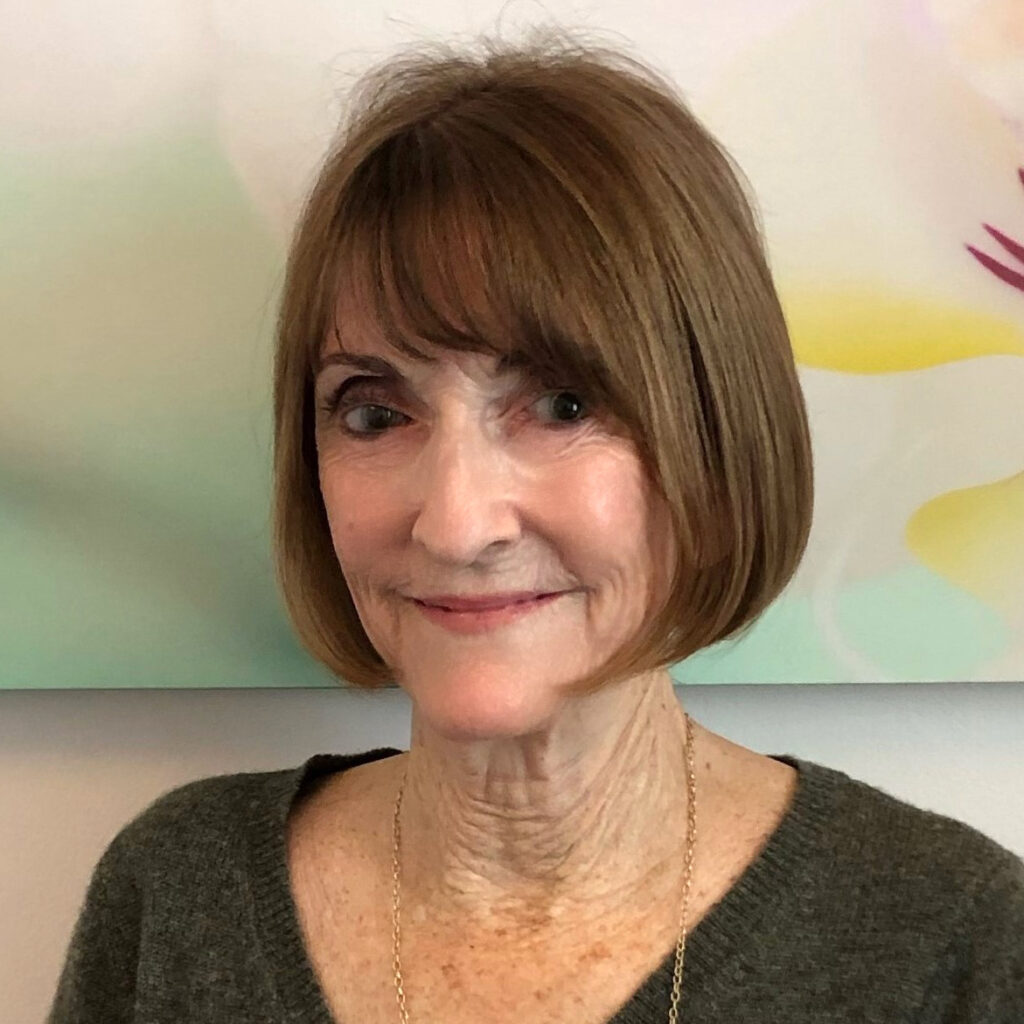

“I took this program to learn more about how to better identify and resolve vagus nerve restrictions. The vagus nerve is one of the most important things to evaluate in so many situations. While there is a lot to remember, just take things one step at a time to help each patient in the way they need. More chiropractors need to know this information!!!
I feel I am able to better evaluate and treat the occiput, especially in infants. A mom brought a newborn to me that was not latching well at all, no lip or tongue ties and suckling (on finger) was not being done well. Baby had a slight head tilt to the right with a lower occiput on the right. After doing an occipital correction alone, the baby started to latch much better, along with a huge improvement in suckling. Atlas also needed correction.
They do a great job breaking the information down into small, easy to learn stages, with more information than I was ever taught in school!”
Dr. Celeste Krawchuk
“The Vagus Nerve has a central relevance in the development of adaptation to stress, disorders in the functioning of this nerve can condition the development of various pathologies.
My takeaways from the program:
1. – Excellent training and very complete.
2. – Obtaining knowledge about the foundation for the various techniques.
3. – Techniques that are learned and are immediately applicable.
4. – Learning system with resolution of doubts
5. – objective utility when complementing with exams such as the HRV.
This program has allowed me to more effectively improve symptoms such as pain, headache and cognitive problems. It has given me the tools to clearly demonstrate the benefits of Chiropractic beyond pain management.
I used these techniques and not only did it resolve the headache, but I also measured his change in HRV pre and post adjustment, and the change was clear and noticeable. Incredible experience.
I highly recommend this program, essential, clear, complete, concise, and above all with the complement of being able to clarify your doubts. The experience of Doctors Watson and Rosen is invaluable and I am honored to have been able to participate in this experience.”
Dr. Cesar Segura
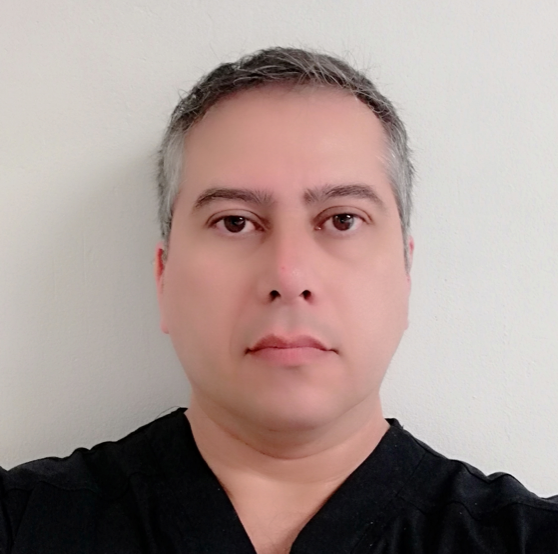

“I took this course because my employer wanted me to take this course to expand knowledge into different patient demographics.
Videos are easy to follow along and the lengths are great for focused study. The information is valuable for the pediatric patient base that we serve but that I am not experienced with yet enough being a new grad.
This is another tool in the toolbox to better patient outcomes.”
Dr. George Tune
“I wanted to learn more about the vagus nerve and how to diagnose and correct dysfunction of it.
My three takeaways are: Watch the videos multiple times. Get as much hands on practice as you can. Ask questions if you don’t understand something.
Taking this course has made me a better clinician and helped me to explain to patients that chiropractic care is about more than pain.
I’ve started to apply the technique in practice, and it’s amazing to me that most of my patients (adults) have some level of vagus nerve dysfunction. I’m hopeful that resolving it will exponentially improve their outcomes. It was a great course, and I’m very happy it was offered online.”
Dr. Shawnté Hudgins


“This was incredibly worthwhile as each week had a bite sized amount of content so you can really learn the material at a good pace, and implement what you’ve learned on the table. I loved the drip content and the Q and A sessions that brought everything together and in a practical way. I loved the adjustment technique for addressing an anterior atlas and first rib. I am using these adjustments daily! I am already incorporating it in practice. The different places for vagus nerve entrapment, the new adjustments I’ve learned, and how to assess the occiput and upper neck especially, with more intent and specificity.
I would recommend this course, because the material is SO relevant in this day and age, especially when dealing with the downfall of the pandemic and the huge increase in vagal nerve dysfunction. The assessment is straightforward, gentle, and specific.
I have been caring for the pediatric population for over 14 years now and I absolutely love it. What I found extremely beneficial about this course is its relevance to this period of time, the clarity it has brought me with regards to how and where the vagus nerve can be compressed/tractioned, and how we can be so specific in our analysis and adjustments to really help our patients. I found the bite sized weekly classes perfect. I found the videos very beneficial, and do NOT MISS the Q and A sessions for more clarity. I really looked forward to each week as we went through the course, and the homework helped me really learn the material. Even though I could not be physically present, I found this layout to be a great pace for me, and hopefully when I can get back to in person learning, I will be that much more informed to really get the most out of the hands-on learning. Thank you for an awesome 10 weeks!”
Dr. Kelly Fortier
“The program offered a comprehensive approach to the subject. The academic content was rounded out by the clinical applications discussed in the doctors sharing sessions. Your responsiveness to questions and/or concerns is very timely and appreciated.
I have another protocol and tool to use, especially for the chronic, diffusely symptomatic presenting patients. One of the most significant things learned was to consider the path of the vagus nerve and clear all the positive findings along the path and to recheck the indicators as confirmation in addition to the patient’s subject response. A patient with chronic burping was evaluated using the protocol and after the occipital compression, atlas anteriority, first rib, and psoas release there was an immediate cessation of burping and general ease in her abdomen.
Your passion and commitment to teaching what you obviously feel so positively about is inspiring. Thankfully the recordings made it easy to repeat sections if in your excitement you spoke too quickly! Both of you made me more curious to continue learning SOT techniques. Thank You!”
Rosemarie Cartagine, DC, MS, CNS


“I decided to take this course because the vagus nerve has received a lot of attention in social media. So I thought it would be good to study the vagus nerve again and the adjusting techniques specific to influencing the vagus nerve.
My 3 take away would be:
1. identifying occipital side slip versus compression.
2. Using the indicators to show the patient how patient how clearing the occiput and Atlas clears the indicators.
3. Familiarizing myself with the track of the Vagus nerve and relating it to adjusting procedures.
I was struck by the clearing of most indicators with the proper adjustment of Atlas occiput. One patient comes to mind who had developed a cough that was uncontrollable and happened only when he was sitting. I used these procedures and his cough has not returned.
I was reluctant to take an online program… This was my 1st time taking a serious course online. I found the presentations to be concise, well prepared and organized. I appreciated being able to listen to them multiple times as they were packed with information.”
Norri Collier, DC









“I took this course because I did not feel like I was providing as comprehensive upper cervical care as I thought possible for my patients. Three takeaways from this program is that it is very thorough, with detailed instructions and I had the ability to watch the classes multiple times, I have already helped infants and adults improve their health, I have used it on many long-standing patients with excellent results, it has given me more confidence in my ability to diagnose and treat my patients.
I have a grandma that has been a patient of our office for years. She is raising a granddaughter who is 11 years old. I changed the posters in our office so that a poster on the importance of pediatric care was emphasized. I placed it on the wall right beside my adjusting table. The grandma noticed it and began asking about her granddaughter. Turns out she had a horrible delivery and walks very bound with her neck and shoulders compressed. The grandma described her gait as lumbering. She is on an IEP as a struggling reader. She is on Medicaid of which we do not take but I could not knowingly refuse care for this patient so I am treating her at no charge. I have only seen her four times and she said she no longer feels she has a heavy weight on her shoulders, she could not walk heel to toe without falling, etc. Her tutor has noticed a vast improvement in her reading since receiving these four adjustments. She is able to balance on one leg and easily walk heel to toe. Everyone is thrilled with her progress.
I appreciate the effort you both have put into making this class detailed and thorough which has enabled even me at almost 65 years of age to be able to learn it and use the techniques to make a difference in the lives of my patients! Blessings to both of you!”
Dr. Pat Lydy
“I’ve decided to take this course because I wanted to deepen my knowledge about the vagus nerve function and imbalances and how to address it when it gets compressed/tractioned. The program is very well structured, with a good learning pace. Knowing the widespread effect that vagus nerve dysfunction can have in the body and learning how to correct it provides us with a more holistic approach. Techniques learned in this program are well explained, in a practical way.
Since I’ve taken this program I was able to better evaluate both pediatric and adult patients in regards to symptomatology related to the autonomic nervous system. This has had a profound impact in how patients recover overall health and wellbeing. I used these techniques with an adult patient with several digestive issues plus symptomatology in the Cervical and Upper Thoracic Region. Upon evaluation, I found a left occipital compression, with a right occipital sideslip. After correcting the occiput, I’ve checked the atlas, 1st rib, diaphragm and psoas, correcting what was involved using the techniques taught in the program. I’ve finished the session with the temporal bone evaluation and correction. The patient was amazed with the change he felt on those digestive issues (dramatically improved reflux).
Just want to appreciate once more all the work that you’ve put into making these programs available to us…. Thank you!!”
Dr. Ines Moniz Ramos





“Thank you so much for the fantastic course! I decided to take the course as we see so many babies with reflux, colic, and nervous irritability. Adolescents that are otherwise “healthy” with vaso-vagal syncope, etc. who doctors can’t help, and adults in severe sympathetic overdrive who have burn-out, stomach and digestive issues with no apparent causes, etc. I wanted to know more to be able to help these patients better.
I see the immense impact of the Vagus nerve and how many patients have these restrictions which I wasn’t able to accurately assess or treat in this much detail before! Last week I had an (adult) new patient with 2 episodes of hyperextension injuries to her neck, medically unexplainable stomach pain directly after and a clicky sensation in her cervico-thoracic junction as well. Corrected C1 and occipital compression, and the next couple of days she said she slept better, and had fewer episodes of acute stomach flair-ups. Continuing treatment and we’re seeing how it goes. Good start so far! Going to move on to CT junction/clavicle and see what happens.
Thank you for a wonderful program! Was extremely insightful and I’m looking forward to implementing more of these techniques on my patients and looking forward to see how we can help them better.”
Dr. Vanessa Moorcroft
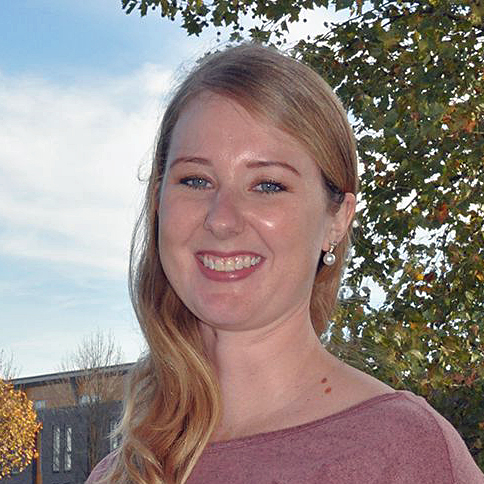

“I took this course to gain a deeper understanding of how chiropractic adjustments can enhance and support the vagus nerve specifically. I feel that in the last few years I have seen a lot of unqualified health practitioners/life coaches, etc. throwing the term ‘vagal tone’ and downplaying its role by listing vague exercises that people can do to enhance it without any assessment or understanding of it. Sometimes I have parents that come in and say they’ve googled things to help their child develop vagal tone etc. As a chiropractor that stresses the importance of a well-regulated nervous system and having the knowledge and tools to do so, it made sense for me to do a course specifically dedicated to the vagus nerve to benefit my clients.
This course has given me more clarity and depth to how chiropractic adjustments specifically address where the vagus nerve may be irritated. In particular, I’ve found it more helpful with explaining to Mums when they bring in their bubs, how a small adjustment at the correct place can change a whole host of symptoms that bub is presenting with. You don’t need to correct everything head to toe, just spend more time trying to locate the area where the irritation is. I’m even spending less time in the session as I’m looking for certain findings. The course has given me more specificity when assessing clients and adjusting with a plan and how to recheck after the adjustment instead of relying on Mums reporting the issue is improving.
I’m applying the knowledge from this course more with my paediatric clients. From applying my SOT knowledge, it was common for me to perform dural releases, clear out the occiput (normally traction or posterior), sacrum and HH and ICV releases. It was the first time I had heard of to also check the 1st rib/clavicle and anterior Atlas. It makes sense when you follow the vagus nerves path along the osseous structures! This assessment is part of my adjusting protocols now and I have found that with every paediatric client that the results and alleviation of symptoms are much faster. i.e. I’m seeing faster results in the visit and by the 2nd 3rd visit already. I was getting good results before but now I know and am seeing even better and faster results. The assessment and corrections for the vagus nerve makes sense, is clinically relevant and parents get it.
Thanks for creating a great and well thought out course for chiropractors to learn and benefit from. It’s very versatile and can easily be incorporated into care regardless of technique preference.”
Dr. Diane Dinh
I took this course because I see in practice that many people are struggling with the effects of stress and anxiety. I have also recently become interested in the “Polyvagal Theory” and I wanted to learn some practical techniques to affect vagal nerve function from the bottom up (i.e. through bodywork rather than talking/psychological approaches).
The practical approach to assessing and correcting problems with the vagus nerve is very clear and well-explained. Having a clear idea of how to assess the three main areas where the vagus nerve can be affected, as well as the supporting CMRT and cranial procedures are very helpful in practice. The succinct presentation and drip-feeding of the content is an effective way to learn. The impact of the course has mostly been in my professional life giving me a clearer idea of how to effectively reduce irritation to the vagus nerve.
I saw a lady in practice this week that had had a very difficult 1st trimester of pregnancy requiring hospital treatment several times for hyperemesis. While this had settled she was still experiencing low energy, some nausea and ‘not feeling herself’. Having applied the techniques, her demeanour had completely changed, even her skin colour had improved and she commented “That is so much better, I feel like me again”. Thank you for sharing this valuable information.
DR. NEIL COX
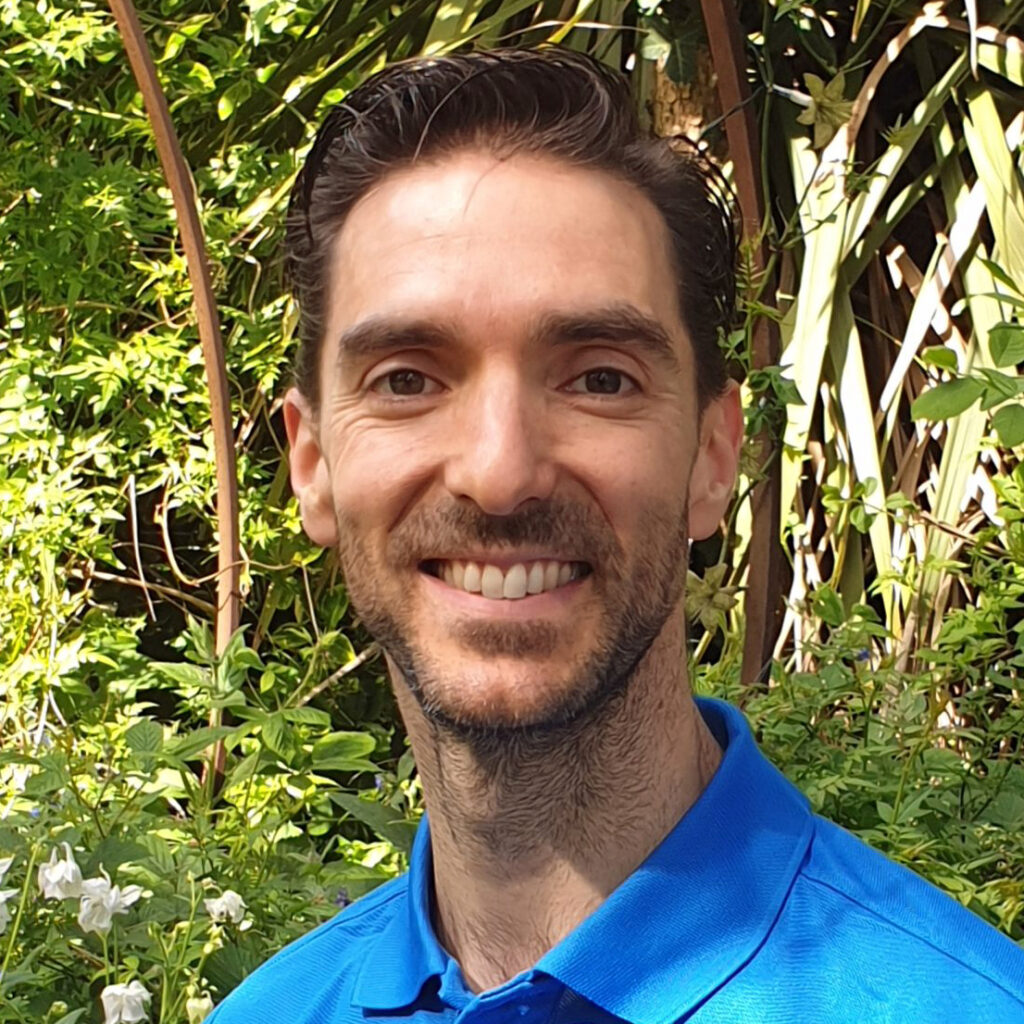

“I was looking to help my patients, both adults and children, with their sympathetic dominant patterns.
I have learned how to evaluate for vagus nerve involvement, the specific corrections for each area of involvement, and how to apply this to both the pediatric and adult populations.
I feel more confident in assessing the occiput and have learned to be more specific in my adjustments.
I have been explaining the far reaching effects the vagus nerve has on the body and was able to specifically explain to a mom with a colicky baby why adjusting the atlas can help her baby.
I think it was a great course and I look forward to future studies with then.”
DR. LESLEY JACKLIN
“Knowing how global the effects of vagus nerve could impact on our body, I wish to learn the way to evaluate and correct these.
I learnt how to evaluate a vagus nerve distortion, and the techniques and protocol for it.
Since quite a lot of the patients in my clinic do show certain signs of vagus nerve irritation, most commonly due to a chronic stressful environment. I find the vagus reflex points useful as an add-on to my usual practice.
Thanks a lot for teaching us such a comprehensive protocol.”
DR. LOK YAN JOANNE CHENG


“I took this program to learn more about the assessment and treatment of the Vagus nerve.
My takeaway is alternative ways of treating upper cervical spine and assessment of where and why to adjust certain listings to treat the vagus nerve appropriately. I have increased confidence of care when dealing with vagus nerve issues.
I have learned muscle testing and leg length listings to assess where and how to adjust to properly affect the vagus nerve irritation. I appreciate the course. Hopefully the more I work with the protocols the more comfortable and efficient I will become.”
DR. AUSTIN WEAVER
“I took this program because I want to learn more about cranial evaluation and adjustments, and more about the vagus nerve in general.
My three takeaways are:
I look at people differently now, I see babies that seem really cute yet also have so much distortion that I wouldn’t have seen before. And ditto for adults.
I appreciate being able to go back and watch these videos multiple times since it’s so much to learn, it’s helping it sink in more. And I like doing it at my own pace/schedule..”
DR. PAMELA STONE

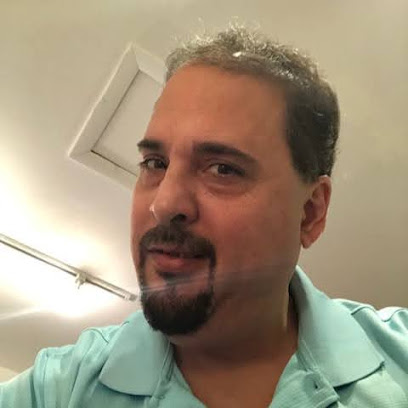
“I took this program because I found it interesting and relevant to my day to day work. I found it comprehensive, thorough and informative. I now see things in my patients and I understand why the people I know are the way they are.
I had a patient presented with a previous diagnosis of Meniere’s Disease. Reported 5 years of symptoms. I followed the steps of clearing Occ-C2 meningeal restriction, osseous misalignment, then Vagus procedures, as per this course, blocked Cat 2 and applied basic cranial procedures. Then specific cranial procedures and CMRT for Vagus, as per this course. 3 Weeks later the patient texted me a lovely picture of her snorkeling in the Caribbean with her family.
This is a convenient, informative and interesting way to learn the chiropractic study I value the most.”
DR. THOMAS FASTIGGI
“I decided to take this course because I had already studied the importance of having proper vagal tone but I desired more clinical tools for assessing and correcting vagal tone.
My three takeaways:
Taking this program has increased my confidence in assessing and correcting for vagus nerve imbalance in adults and infants, and allowed me to better serve my patients and family.
I applied the techniques that I learned in this course on a two month old infant with severe head rotation and head tilt…cranium was very flat on one side with severely internally rotated temporal bone on that side. Within the first 3 to 4 visits the infant regained full active ROM in cervical spine and her cranium started to become more symmetrical.
Thank you Dr. Rosen and Dr. Watson for teaching this amazing work with such precision.”
Dr. DANIEL CHENIER


“I took this program to help improve the effectiveness of my chiropractic technique and therefore my clients’ ability to heal and relax.
These techniques are easy to add into whatever chiropractic technique you already do. There are clear before and after indicators to ensure you have made the correction. It is a quick and easy technique to use.
This program has made me more aware of the importance of the vagus nerve and its role in healing. This has led us at our centre to create a relaxation experience from the moment our clients walk into our centre.”
DR. HANNAH BEARD
“I decided to take this course after completing the hands-on Pediatric SOT course in Tampa this winter, I wanted to better understand the Vagus nerve and how to correct it. Amazing material and instruction, amazing doctors that love what they do and wonderful availability for questions/follow up.
Personally, this course has allowed me to better help my family. I took this course to gain a better understanding of the vagus nerve and how to correct it because my son was in need of correction, as well as other family members. And professionally it has helped build my confidence because not only did 1 extremely difficult pediatric case walk into my office but 3 did. And after taking Dr. Rosen hands on and online course, my confidence in being able to not only understand the problem but also correct it has gone up tremendously.
Newborn infant came in with cranial distortions and 2 hematomas. Inability to latch well with mom and refuse the bottle. After a few short weeks the hematomas had disappeared and the cranium was starting to look a lot better. Latch got very good with mom’s breast; however a few months later we are still working on latching to a bottle. Baby is almost 5 months and hitting milestones great. However, I know we have made great progress. I was really hoping I could help the baby to take a bottle. Overall really happy with the progress this baby is currently making, we are still working on making more progress!
I really appreciate the time and effort you both have put into this course and the rest of the courses. I really enjoy them! I look forward to taking more!”
Dr. MERCEDES ROBINSON
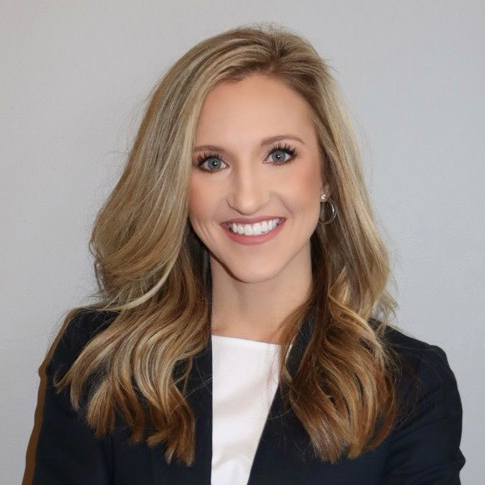

“I took this program to learn more techniques to release the vagus nerve.
My three takeaways for the program:
1) Clear steps to evaluate if the vagus nerve is compromised.
2) Gentle and easy to apply techniques to correct it.
3) Gain confidence in releasing the vagus nerve on a patient.
I have gained confidence in releasing the vagus nerve on a baby/toddler. I had a 9 month patient who wasn’t sleeping longer than 2-3 hours at night and couldn’t turn his head to the left. He is now sleeping longer and turning his head to the left and is a lot more settled.
I just wanted to say I really appreciate you sharing all your knowledge and techniques with us. They make such an impact in our patients’ lives and have given me more confidence in working with babies. Thank you!”
Dr. alison parsons
“I joined the course to gain knowledge to help my pediatric patients. The program was very informative (there were a lot of clinical tidbits to apply in clinic) and the instructors were quick to answer any questions.
This program gave me tools to help pediatric patients in my practice in order to help with any digestive issues and colic symptoms; it also deepened my knowledge and understanding of cranial work.
I have a post-concussion patient that is currently presenting with vagus nerve symptoms with which I am using the protocol. Thank you for this great course.”
Dr. JOSÉE DUTRISAC


“I am interested in continuing to learn SOT because there is a lot to figure out with the technique and I’m trying to decide what the best method for consuming the content to keep digesting will be best for me. I like the idea of the membership so I can have access to the videos whenever I make time to study.
Already knowing the vagus nerve and its importance for the body, it was great learning where the nerve is most likely compromised, how to assess those areas specifically, and how to adjust them simply. Other techniques don’t get so specific in such a simple way.
Taking your programs has helped me work towards a bigger purpose of serving kids to the best of my ability. Sometimes we get stuck on a path without self-growth and this has been challenging me personally and professionally to improve clinically to better serve kids in my community.
I had a woman presenting with a headache in the office during her scheduled adjustment. She was presenting with occipital compression, atlas dural restriction and psoas involvement. After correcting the subluxations present, the headache started to decrease immediately. The indicators also cleared after rechecking them.”
Dr. THOMAS WILLIAMS
“I took this program to learn different applications in vagus nerve function.
My takeaways are to remember there are structural, neurological, and vascular impacts on vagus nerve function. I have added another tool to my belt.
I have an existing patient with Pain levels not going down as expected with auricular vagus stimulation. I applied these tools and pain levels began to decrease within 2 minutes with auricular vagus stimulation.”
Dr. DAVID KING


“As I adjust babies only in my daily practice, I see a lot of them with vagus issues… I wanted to feel more confident with my understanding of that, learn techniques or protocols to check and adjust these little ones.
My takeaways are: Don’t forget to check and adjust the anterior atlas – “visceral triad” (GB-Stomach-ICV) as a short way to check the vagus involvement – clear the vagus first (occipital compression/sideslip, anterior C1, 1st rib/C7, psoas, diaphragm, visceral triad) then correct the cranial fixations/subluxations if needed.
This program really helped me to put together many things I already knew. It means it is much clearer for me now.
Last week with a little 2 months old. She was brought by her mom because she felt her baby was ‘nervous’. This little girl has ‘colics’ and can’t stay alone, mom has to carry her all day long. She can sleep on her mother’s belly only (never alone, never in her own bed)… I followed the protocol for vagus evaluation: baby prone on her mom, checked for occipital compression, glut indicators, short leg… I corrected a left occipital compression prone, then an anterior C1 in a supine position, cleared the visceral triad and then I corrected the occiput into flexion. The baby fell asleep alone on the bench at the end of the session while I was explaining this adjustment to the mom. Was a very nice moment!
Thank you so much for everything you do for us! I really enjoy each seminar I took with you!”
Dr. CORALIE GARNESSON
Join my mailing list for tips on chiropractic technique, practice management, research and philosophy.
I promise your email will never be shared, sold, or rented!

Peak Potential Institute
Wellesley, MA
drmartinrosen@gmail.com